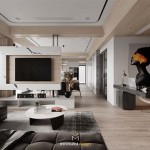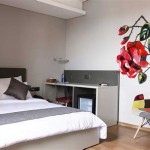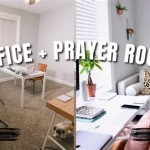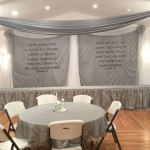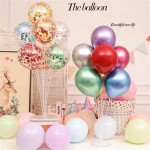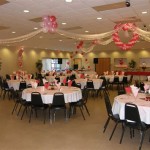How to Decorate Your Bedroom With Simple Things
Bedroom decoration does not necessitate extravagant spending or complex design schemes. A comfortable and aesthetically pleasing bedroom can be achieved through thoughtful utilization of simple, readily available items and strategic organization. The key resides in understanding the foundational principles of design and adapting them to personal style and spatial constraints.
Successfully decorating a bedroom with simple things involves careful consideration of various elements. These elements include color palettes, lighting arrangements, furniture placement, and the incorporation of textures and patterns. Before commencing any physical alteration, it is beneficial to assess the existing room layout, identify potential areas for improvement, and establish a clear vision for the desired outcome.
Optimizing Color and Lighting
Color and lighting play pivotal roles in shaping the ambiance of a bedroom. Colors have the power to influence mood and perception of space. Lighter, neutral colors, such as whites, creams, and pastels, tend to make a room appear larger and more airy. Conversely, darker colors can imbue a sense of coziness and intimacy, but should be used judiciously, particularly in smaller rooms, to avoid creating a claustrophobic atmosphere. The selection of a color palette should align with the desired feeling for the room and complement existing furniture and décor.
Lighting design necessitates a layered approach, encompassing ambient, task, and accent lighting. Ambient lighting provides overall illumination, typically achieved through ceiling fixtures or lamps strategically placed around the room. Task lighting is crucial for specific activities, such as reading or working, and can be provided by bedside lamps or adjustable floor lamps. Accent lighting serves to highlight particular features, such as artwork or architectural details, adding depth and visual interest to the space. Dimmable lighting options offer flexibility in adjusting the brightness and creating different moods within the bedroom.
Utilizing existing natural light is paramount. Ensure windows are unobstructed by heavy curtains or furniture to maximize the influx of sunlight during the day. Lightweight, sheer curtains or blinds can provide privacy while still allowing natural light to filter through. Mirrors can be strategically positioned to reflect light and further brighten the room. By thoughtfully managing color and lighting, one can transform the overall feel of a bedroom without making substantial purchases.
Strategic Furniture Arrangement and Decluttering
Furniture arrangement is a fundamental aspect of bedroom decoration. Maximizing space and functionality is paramount. Before physically moving furniture, consider drawing a scaled floor plan of the room and experimenting with different layouts on paper. This pre-planning process can prevent unnecessary heavy lifting and help identify the most efficient configuration.
The bed is typically the focal point of the bedroom and should be positioned in a way that allows for easy access and movement around the room. Ideally, the bed should be placed against a wall that is not directly facing the door to provide a sense of security and privacy. Nightstands should be placed on either side of the bed, providing surfaces for lamps, books, and other bedside essentials. A dresser or chest of drawers can be positioned along another wall to provide storage for clothing. Smaller items, such as jewelry or accessories, can be organized using drawer dividers or decorative boxes.
Decluttering is an indispensable element of effective bedroom decoration. Removing unnecessary items reduces visual clutter and creates a sense of order and calm. Start by sorting through all belongings and identifying items that are no longer needed, used, or loved. These items can be donated, sold, or discarded. Implement a consistent storage system to keep remaining items organized and easily accessible. Utilize storage solutions such as under-bed storage containers, baskets, and shelving to maximize space and keep clutter at bay. Regularly decluttering the bedroom will maintain a clean and organized environment, enhancing the overall aesthetic appeal and promoting relaxation.
Incorporating Textures and Patterns for Visual Interest
Introducing textures and patterns to a bedroom can significantly enhance its visual interest and create a more inviting atmosphere. Textures can be incorporated through various elements, such as bedding, rugs, curtains, and wall décor. Different textures evoke different sensations. For example, soft, plush fabrics, such as velvet or faux fur, can create a feeling of luxury and comfort, while natural textures, such as linen or cotton, can lend a more relaxed and organic vibe.
Bedding presents an excellent opportunity to introduce texture and pattern. Layering different textures, such as a quilted comforter, a knitted throw blanket, and linen pillowcases, can create a visually appealing and tactile experience. Throw pillows in various shapes, sizes, and textures can further enhance the bed's aesthetic appeal. Consider incorporating throws and pillows with subtle patterns to add depth and visual interest without overwhelming the space.
Rugs can also serve as a focal point and introduce texture and pattern to the bedroom floor. A soft, shaggy rug can add warmth and comfort underfoot, while a patterned rug can inject personality and vibrancy into the room. Choose a rug size that is proportionate to the room, typically covering a significant portion of the floor space. Wall décor, such as framed artwork, tapestries, or mirrors, can also contribute to the overall texture and pattern of the room. Consider incorporating a mix of textures and patterns to create a visually dynamic and stimulating environment. The key is to strike a balance, ensuring that the textures and patterns complement each other and do not clash or overwhelm the space.
Furthermore, simple DIY projects can be undertaken to add personalized touches without incurring significant expense. Repurposing old items, such as turning mason jars into vases or creating wall art from reclaimed wood, can add character and uniqueness to the bedroom. Utilizing natural elements, such as plants or seashells, can also bring a sense of tranquility and connection to the outdoors. By embracing creativity and resourcefulness, one can transform a bedroom into a personalized sanctuary that reflects individual style and preferences.
Effective bedroom decoration using simple things is a process of careful planning, thoughtful execution, and consistent maintenance. By optimizing color and lighting, strategically arranging furniture, and incorporating textures and patterns creatively, it is possible to establish a comfortable, aesthetically pleasing, and personalized space without resorting to costly or complicated interventions. Regular decluttering and a commitment to sustaining order are essential for preserving the room's aesthetic appeal and maintaining its functionality over time.

Simple Bedroom Decorating Ideas Home Design Jennifer Maune

30 Stylish Bedroom Wall Decor Ideas And Tips

10 Minimal Bed Decoration Ideas To Give Your Article A Makeover

The Best Bedroom Decor Ideas Stunning Designs In 2025

Bed Decoration Ideas To Recharge In Style Designcafe

How Can I Decorate My Bedroom With Simple Things Fif

Best Bedroom Decor Ideas Forbes Home

25 Latest Bedroom Decoration Ideas By Livspace 2025

60 Diy Bedroom Makeover Ideas Tips

85 Bedroom Ideas How To Decorate A Stunning
Related Posts
